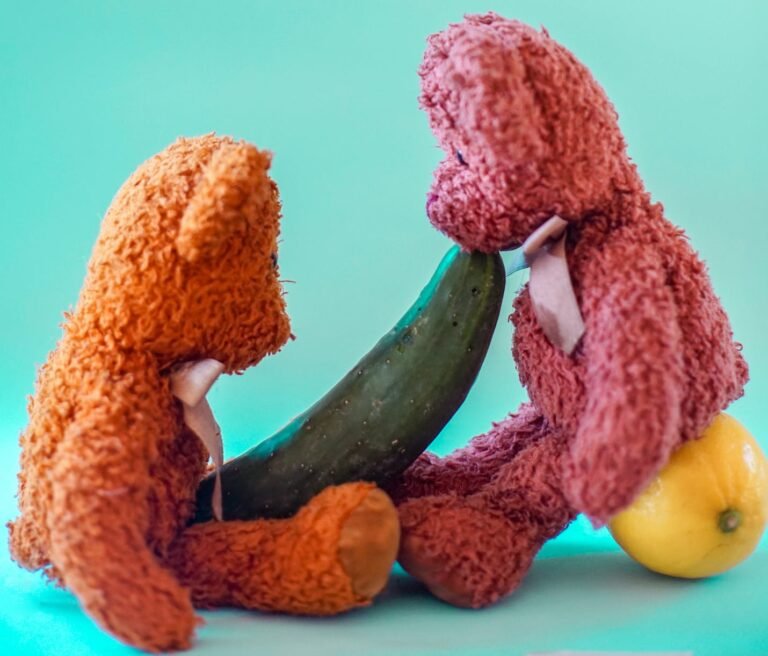Female Sexuality in Young Adult Literature (YA)

Key Highlights
- Female sexuality in young adult literature has evolved over time, reflecting historical perspectives and contemporary shifts in society.
- Young adult literature encompasses a wide range of genres, including romance, fantasy, and dystopian, that explore different aspects of female sexuality.
- The representation of female sexuality in YA literature plays a significant role in shaping the understanding and experiences of young readers.
- Societal norms and influences, such as feminism and censorship, impact the portrayal of female sexuality in YA literature.
- Female authors have faced challenges in writing about female sexuality in YA literature, but many have also broken barriers and brought diverse voices to the forefront.
- Reader reception and interpretation of female sexuality in YA literature can be empowering for young readers, but it can also be subject to criticism and praise.
- YA literature serves as a platform for sexual education, teaching young readers about important topics while also highlighting the gap between reality and fiction.
- Comparative analysis with male sexuality in YA literature reveals both similarities and differences, as well as the role of gender dynamics in storytelling.
- The future of female sexuality in YA literature lies in trends and predictions that emphasize the need for diverse voices and stories.
Introduction
Young adult literature, often abbreviated as YA, has become a popular genre that explores the experiences and challenges of adolescents and young adults. Within this genre, female sexuality has emerged as a significant and evolving theme. YA literature offers a unique platform to explore and understand female sexuality, as it captures the diverse experiences and perspectives of young women.
The representation of female sexuality in YA literature has evolved over time, reflecting both historical perspectives on femininity and contemporary shifts in societal norms. Historical perspectives often focused on limited portrayals of female sexuality, while contemporary shifts have embraced more nuanced and inclusive narratives. This blog will delve into the evolution of female sexuality in YA literature, the representation of female sexuality in different genres, the impact of societal norms on YA literature, the perspectives of authors, reader reception and interpretation, sexual education through YA literature, a comparative analysis with male sexuality, and the future of female sexuality in this genre.
The Evolution of Female Sexuality in YA Literature
The depiction of female sexuality in YA literature has undergone a significant transformation over the years. In the early days of young adult fiction, female characters were often portrayed as passive and dependent on male counterparts. They were limited to traditional gender roles and the exploration of their own desires and identities was seldom addressed.
However, as society evolved and discussions around gender and sexuality became more open, YA literature began to reflect these changes. Authors started to explore the complexities of female sexuality, depicting young women as multidimensional characters with their own desires and agency. This shift allowed for a more authentic representation of the diverse experiences and challenges faced by young women.
Historical Perspectives on Female Sexuality
In the early years of young adult literature, female sexuality was often portrayed within the boundaries of societal norms and expectations. Female characters were typically depicted as virginal and focused on finding love and marriage. The exploration of female desires and sexual experiences was largely absent from YA books.
As time progressed, however, there were glimpses of more nuanced portrayals of female sexuality. Books like “Forever” by Judy Blume and “Go Ask Alice” by Anonymous addressed topics such as sexual relationships and the consequences of sexual choices. These books pushed the boundaries of what was considered acceptable and paved the way for more honest discussions about female sexuality in YA literature.
Contemporary Shifts in Narratives
In recent years, there has been a noticeable shift in the narrative surrounding female sexuality in YA literature. Young women are now being portrayed as complex individuals with their own desires, challenges, and agency. Books like “The Hunger Games” by Suzanne Collins and “The Fault in Our Stars” by John Green feature female protagonists who navigate issues of love, desire, and self-discovery.
This shift in narratives reflects the changing attitudes towards female sexuality in society. There is a growing recognition that young women should have the freedom to explore and express their own desires without judgment or shame. Contemporary YA literature strives to provide a safe space for young women to see themselves represented and to find validation in their own experiences.
Representation of Female Sexuality in YA Genres
The representation of female sexuality in YA literature is not limited to a single genre. From romance and coming-of-age stories to fantasy and dystopian worlds, different genres explore different aspects of female sexuality. These genres provide a variety of narratives and perspectives, allowing young readers to engage with the topic in diverse and meaningful ways.
Romance and Coming-of-Age Stories
Romance and coming-of-age stories are popular genres within YA literature that often explore the complexities of female sexuality. These stories focus on the emotional and physical growth of young women as they navigate relationships, self-discovery, and sexual awakening. Some key themes and elements found in these genres include:
- Romantic relationships: YA literature often portrays romantic relationships as a central aspect of a young woman’s journey towards self-discovery.
- Coming-of-age: These stories depict the transition from adolescence to adulthood, highlighting the challenges and experiences that shape a young woman’s understanding of herself and her sexuality.
- Empowering young readers: Romance and coming-of-age stories can provide young readers with relatable characters and narratives that empower them to embrace their own desires and navigate healthy relationships.
- Young readers: YA literature allows young readers to explore and understand their own evolving sexuality in a safe and supportive environment.
Fantasy and Dystopian Worlds
Fantasy and dystopian worlds offer a unique backdrop for exploring female sexuality in YA literature. These genres often feature strong female protagonists who challenge societal norms and expectations. The representation of female sexuality in fantasy and dystopian worlds can include themes of empowerment, agency, and the reimagining of traditional gender roles.
For example, in J.K. Rowling’s “Harry Potter” series, female characters like Hermione Granger and Ginny Weasley exhibit agency and independence, while also navigating romantic relationships. The dystopian genre, exemplified by books like “The Hunger Games” trilogy by Suzanne Collins, often explores themes of survival, rebellion, and the impact of power dynamics on female characters.
Fantasy and dystopian YA literature not only entertain readers with captivating stories but also provide a platform for discussing important social issues and challenging traditional notions of gender and sexuality.
Impact of Societal Norms on YA Literature
Societal norms play a significant role in shaping the representation of female sexuality in YA literature. These norms can influence what is considered acceptable and appropriate for young readers. Two key factors that impact the portrayal of female sexuality in YA literature are feminism and the role of censorship and controversy.
Influence of Feminism
Feminism has had a profound impact on the representation of female sexuality in YA literature. The feminist movement has challenged traditional gender roles and expectations, paving the way for more diverse and authentic portrayals of female characters. Feminist YA literature explores themes of agency, consent, and the dismantling of patriarchal norms.
Authors like Laurie Halse Anderson, whose book “Speak” addresses the topic of sexual assault, and Angie Thomas, whose book “The Hate U Give” highlights the intersectionality of race and gender, have brought important feminist perspectives to the forefront of YA literature. These books provide young readers with valuable insights into the complexities of female sexuality and the importance of advocating for gender equality.
The Role of Censorship and Controversy
Censorship and controversy surrounding the portrayal of female sexuality in YA literature have shaped the landscape of this genre. Librarians and educators often grapple with the challenge of balancing the need for open and honest discussions about sexuality with concerns about appropriateness for young readers. The following table provides an overview of notable cases of censorship and controversy in YA literature:
|
Title of Book |
Reason for Controversy |
Impact on YA Literature |
|
“Forever” by Judy Blume |
Addressed the topic of teenage sexuality |
Opened up discussions about sexual education in YA literature |
|
“The Perks of Being a Wallflower” by Stephen Chbosky |
Addressed themes of abuse and mental health |
Sparked conversations about the importance of addressing sensitive topics in YA literature |
|
“Eleanor & Park” by Rainbow Rowell |
Depicted a interracial teenage romance |
Raised awareness about the need for diverse representation in YA literature |
Despite the challenges faced, these instances of controversy have brought attention to the importance of inclusivity, diversity, and the freedom to explore complex topics in YA literature.
The Authors’ Perspectives
The authors of YA literature play a crucial role in shaping the representation of female sexuality. They face challenges in addressing this topic while ensuring that their work is relatable and meaningful to young readers. However, many authors have also broken barriers and brought diverse voices to the forefront.
Challenges in Writing about Female Sexuality
Authors face various challenges when writing about female sexuality in YA literature. These challenges can include navigating societal expectations, addressing sensitive topics, and ensuring the representation is authentic and inclusive. However, authors who are able to navigate these challenges successfully contribute to a more nuanced and empowering portrayal of female sexuality in YA literature.
Navigating societal expectations: Authors must navigate societal norms and expectations to ensure that their portrayal of female sexuality resonates with young readers while also challenging harmful stereotypes.
Addressing sensitive topics: Writing about sensitive topics such as consent, sexual assault, and body image requires authors to approach these subjects with care and sensitivity, taking into account the emotional well-being of young readers.
Authentic and inclusive representation: Authors strive to create diverse and authentic representations of female sexuality, ensuring that young readers from all backgrounds can see themselves reflected in the stories they read.
Authors Who Have Broken Barriers
Several authors have made significant contributions to the portrayal of female sexuality in YA literature by breaking barriers and bringing diverse voices to the forefront. John Green, known for his novel “The Fault in Our Stars,” explores the complexities of love and relationships while addressing serious issues such as illness and mortality. Green’s work resonates with young readers and has sparked important conversations about the representation of female sexuality in YA literature.
Another notable author is David Levithan, whose novel “Two Boys Kissing” focuses on LGBTQ+ characters and their experiences with love and identity. Levithan’s work challenges heteronormative narratives and highlights the importance of diverse representation in YA literature.
These authors and many others continue to push the boundaries of traditional storytelling, creating narratives that empower young readers and encourage a more inclusive understanding of female sexuality.
Reader Reception and Interpretation
Reader reception and interpretation of female sexuality in YA literature can have a significant impact on how young readers understand and engage with the topic. It can be empowering for young readers to see themselves represented in the stories they read, but it can also be subject to criticism and praise.
Empowering Young Female Readers
Representation of female sexuality in YA literature has the power to empower young female readers. Seeing characters who navigate their desires and challenges can help young readers develop a sense of self-awareness and agency. When young readers see themselves reflected in the stories they read, it can validate their experiences and help them navigate their own journeys of self-discovery.
Criticism and Praise from the Audience
The portrayal of female sexuality in YA literature is not without its critics. Some argue that certain books perpetuate harmful stereotypes or present unrealistic expectations. However, there is also praise for authors who tackle complex topics with sensitivity and provide young readers with a safe space for exploring their own sexuality through literature. The diverse perspectives of readers contribute to a rich and nuanced understanding of female sexuality in YA literature.
Sexual Education through YA Literature
YA literature serves as a valuable tool for sexual education, offering young readers the opportunity to learn about important topics while also providing a platform for open discussions.
What Young Readers are Learning
Through YA literature, young readers can learn about a wide range of topics related to female sexuality. Books can address issues such as consent, healthy relationships, body positivity, and LGBTQ+ experiences. YA literature allows young readers to explore these topics in a safe and supportive environment, fostering understanding and empathy.
The Gap between Reality and Fiction
It is essential to acknowledge the gap between the representation of female sexuality in YA literature and the reality faced by young readers. While books offer valuable insights and perspectives, they are ultimately works of fiction. It is important for young readers to have access to accurate and comprehensive sexual education resources that provide a more realistic understanding of sexuality.
Comparative Analysis with Male Sexuality in YA
Comparing the representation of female sexuality with male sexuality in YA literature reveals both similarities and differences. These comparisons highlight the role of gender dynamics in storytelling and shed light on how societal norms influence the portrayal of sexuality in different genders.
Similarities and Differences in Representation
In YA literature, both male and female sexuality are explored, albeit in different ways. Similarities can be found in the exploration of desires, relationships, and self-discovery. However, differences arise in the societal expectations and pressures placed on male and female characters. Understanding these similarities and differences provides young readers with a more comprehensive understanding of human sexuality.
Gender Dynamics in Storytelling
Gender dynamics play a significant role in how sexuality is portrayed in YA literature. Traditional gender roles and expectations can influence the narratives and character development in stories. Challenging these dynamics and presenting diverse representations of gender and sexuality in YA literature is vital for fostering inclusivity and breaking down harmful stereotypes.
The Future of Female Sexuality in YA Literature
The future of female sexuality in YA literature holds many possibilities. Trends and predictions indicate a continued emphasis on inclusive storytelling and diverse voices.
Trends and Predictions
Trends in YA literature suggest that there will be an increased focus on authentic and inclusive portrayals of female sexuality. Future books may explore a wider range of experiences, including those of marginalized communities, and promote discussions around consent, body positivity, and healthy relationships. Authors will continue to push boundaries and challenge traditional narratives, reflecting the evolving attitudes and understanding of female sexuality.
The Need for Diverse Voices and Stories
The need for diverse voices and stories in YA literature is crucial for a more inclusive representation of female sexuality. Young readers from different backgrounds should be able to see themselves reflected in the stories they read. Embracing diverse perspectives not only provides a more accurate portrayal of female sexuality but also fosters empathy and understanding among young readers.
Conclusion
In the realm of Young Adult Literature, the portrayal of female sexuality has undergone a profound evolution. From historical narratives to contemporary shifts, the representation in genres like romance and fantasy has influenced societal norms. Authors, despite facing challenges, have empowered young female readers and sparked critical conversations. As readers navigate between reality and fiction, the need for diverse voices becomes apparent for a richer narrative tapestry. Exploring themes, gender dynamics, and the educational aspect, YA literature serves as a mirror reflecting the complexities of female sexuality. Embracing this complexity, sharing these insights on social media can further amplify the dialogue.
Frequently Asked Questions
How Do YA Authors Approach Writing About Female Sexuality?
YA authors approach writing about female sexuality with sensitivity and an understanding of the impact their words can have on young readers. They navigate societal expectations, address sensitive topics, and strive for authentic and inclusive representation.
What are some common themes surrounding female sexuality in Young Adult Literature?
Common themes surrounding female sexuality in YA literature include self-discovery, identity, agency, consent, body positivity, and LGBTQ+ experiences. These themes explore the complexities and challenges faced by young women as they navigate their own desires and relationships.
How can portrayals of female sexuality in YA literature impact young readers?
By shaping perceptions and fostering discussions, portrayals of female sexuality in YA literature can influence young readers’ attitudes towards gender, relationships, and self-identity.
Are there any notable authors or books that explore female sexuality in YA literature?
Exploring female sexuality in YA literature, notable authors like Judy Blume with “Forever” and Sarah Dessen with “Dreamland” have delved into this theme. Books like “The Earth, My Butt, and Other Big Round Things” by Carolyn Mackler also tackle this subject sensitively.
How can parents and educators facilitate discussions about female sexuality in YA literature with young readers?
Encourage open dialogues, provide age-appropriate resources, and respect diverse perspectives. Utilize discussion guides and create safe spaces for questions. Foster critical thinking and empathy to navigate sensitive themes effectively.





